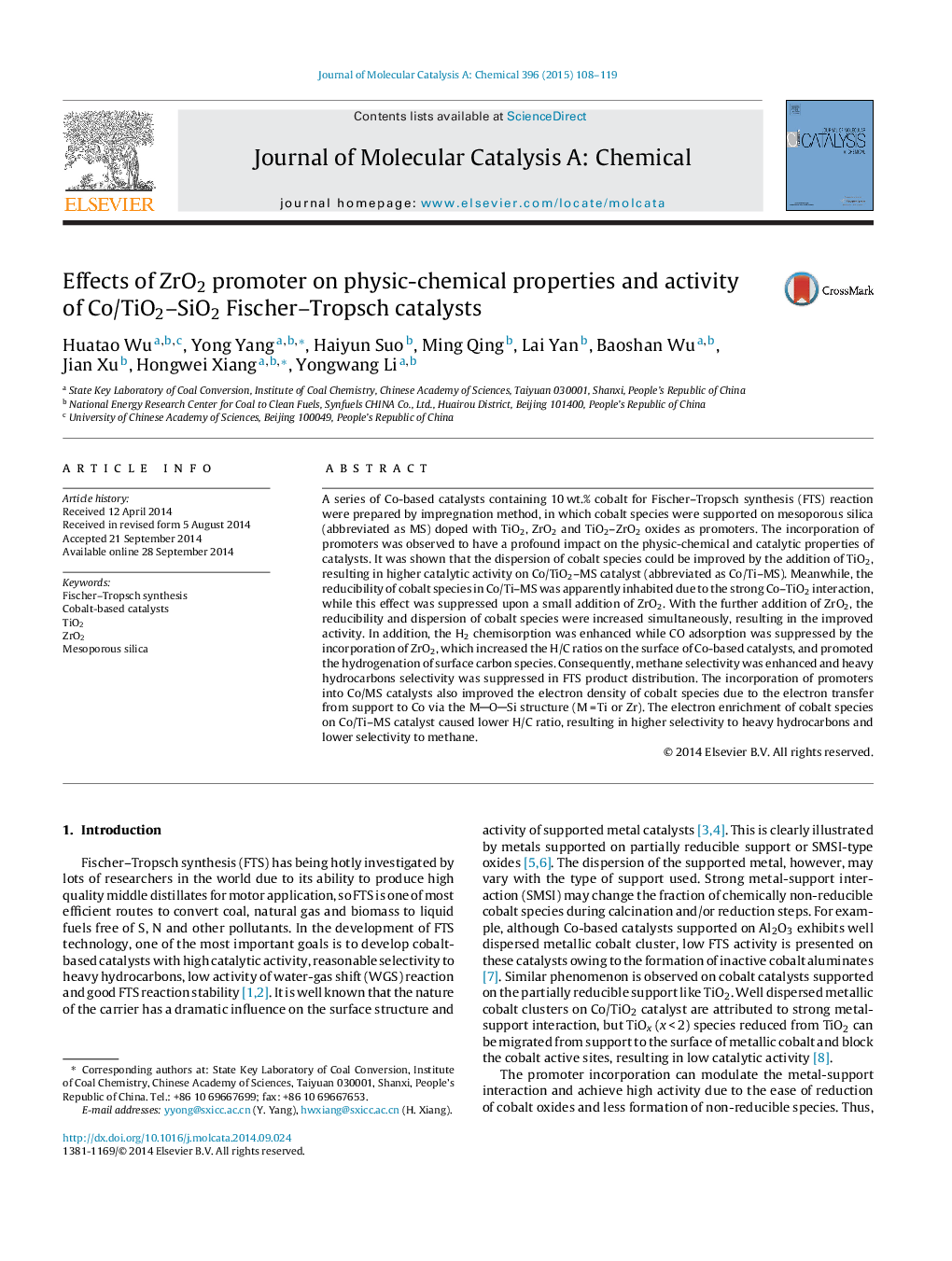| کد مقاله | کد نشریه | سال انتشار | مقاله انگلیسی | نسخه تمام متن |
|---|---|---|---|---|
| 65257 | 48387 | 2015 | 12 صفحه PDF | دانلود رایگان |

• The addition of TiO2 strengthened Co-support interaction and caused low cobalt reduction degree.
• A small amount of ZO2 suppressed the blockage of cobalt by TiOx and increased reducibility of cobalt species.
• Proper reduction degree and dispersion of cobalt species at high Zr loading caused high activity.
• The addition of ZrO2 improved the H2 adsorption but decreased the CO adsorption.
• The addition of ZrO2 shifted the FTS product distribution to light hydrocarbons.
A series of Co-based catalysts containing 10 wt.% cobalt for Fischer–Tropsch synthesis (FTS) reaction were prepared by impregnation method, in which cobalt species were supported on mesoporous silica (abbreviated as MS) doped with TiO2, ZrO2 and TiO2–ZrO2 oxides as promoters. The incorporation of promoters was observed to have a profound impact on the physic-chemical and catalytic properties of catalysts. It was shown that the dispersion of cobalt species could be improved by the addition of TiO2, resulting in higher catalytic activity on Co/TiO2–MS catalyst (abbreviated as Co/Ti–MS). Meanwhile, the reducibility of cobalt species in Co/Ti–MS was apparently inhabited due to the strong Co–TiO2 interaction, while this effect was suppressed upon a small addition of ZrO2. With the further addition of ZrO2, the reducibility and dispersion of cobalt species were increased simultaneously, resulting in the improved activity. In addition, the H2 chemisorption was enhanced while CO adsorption was suppressed by the incorporation of ZrO2, which increased the H/C ratios on the surface of Co-based catalysts, and promoted the hydrogenation of surface carbon species. Consequently, methane selectivity was enhanced and heavy hydrocarbons selectivity was suppressed in FTS product distribution. The incorporation of promoters into Co/MS catalysts also improved the electron density of cobalt species due to the electron transfer from support to Co via the MOSi structure (M = Ti or Zr). The electron enrichment of cobalt species on Co/Ti–MS catalyst caused lower H/C ratio, resulting in higher selectivity to heavy hydrocarbons and lower selectivity to methane.
Figure optionsDownload high-quality image (160 K)Download as PowerPoint slide
Journal: Journal of Molecular Catalysis A: Chemical - Volume 396, January 2015, Pages 108–119